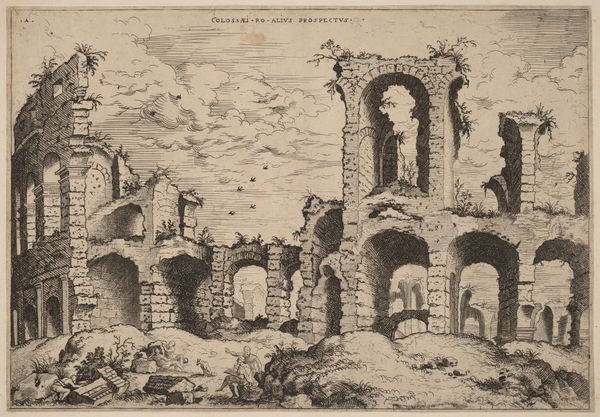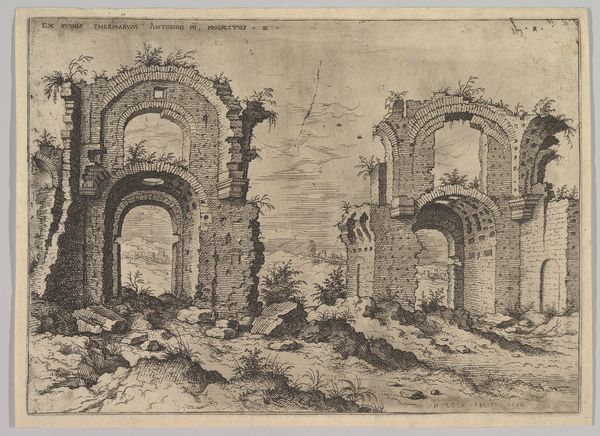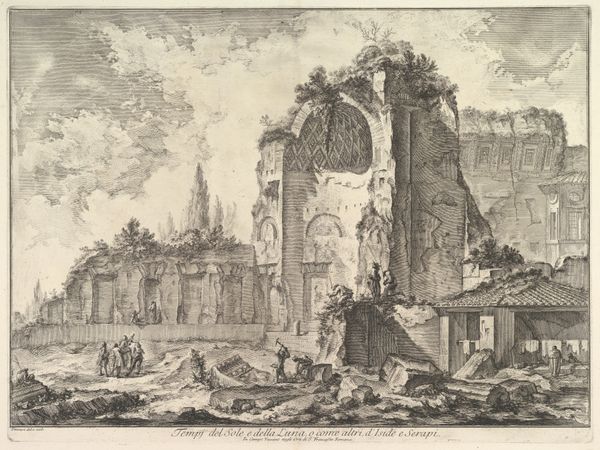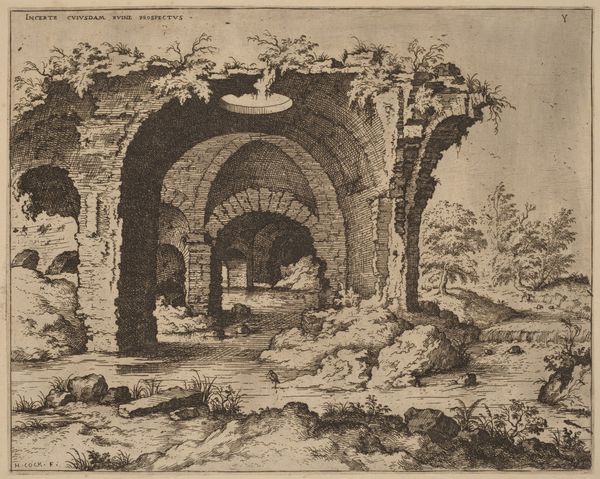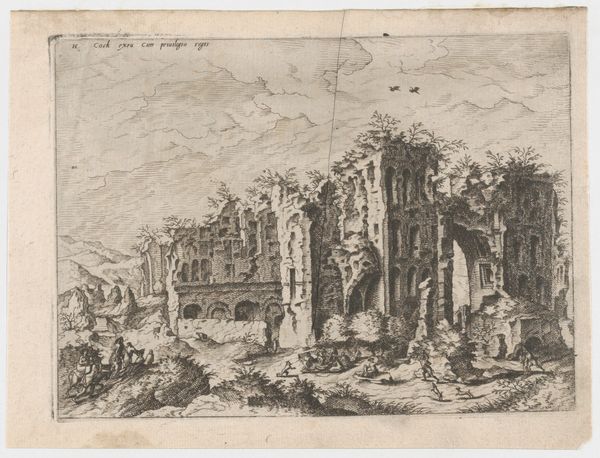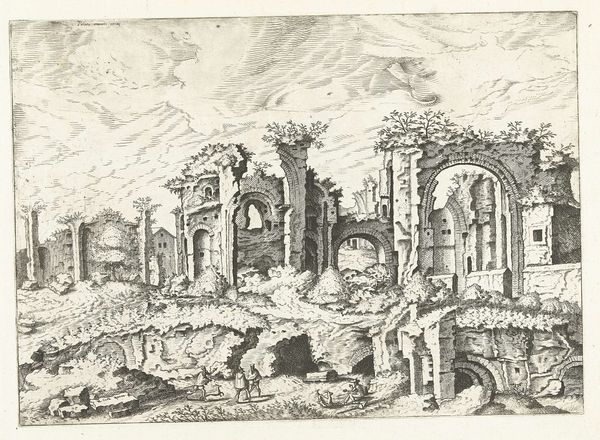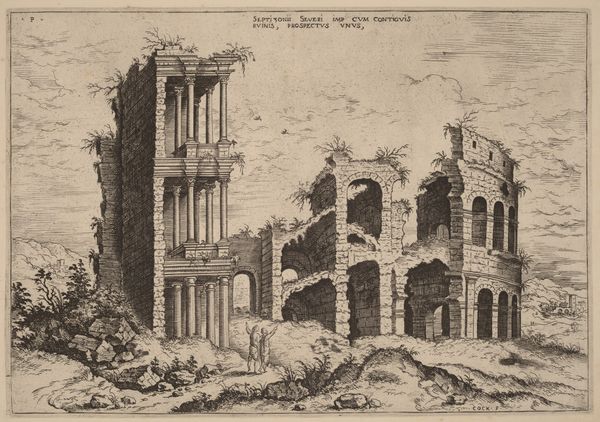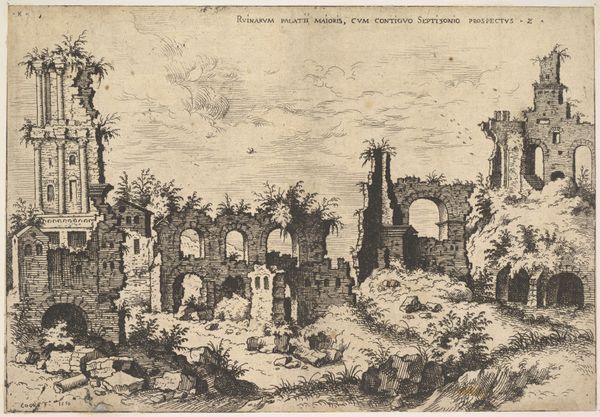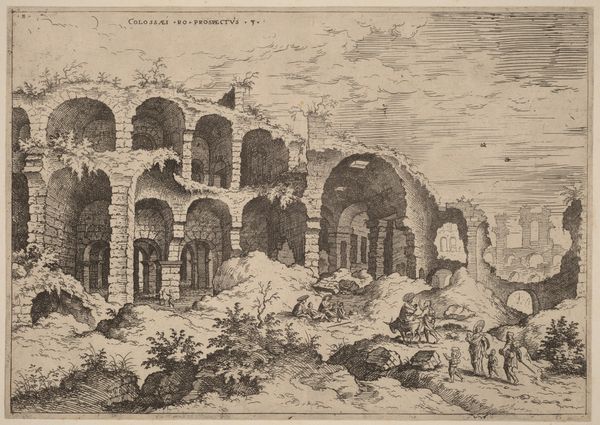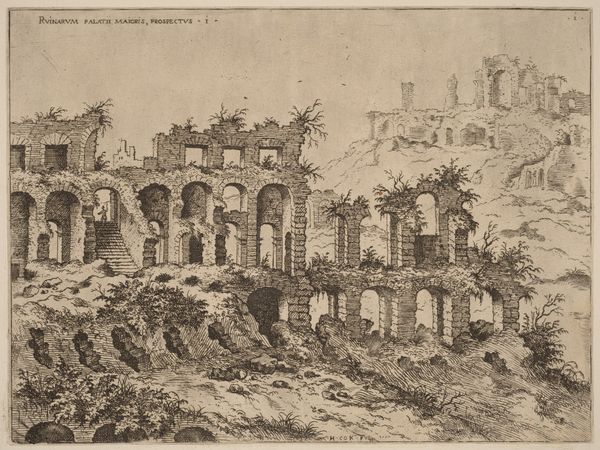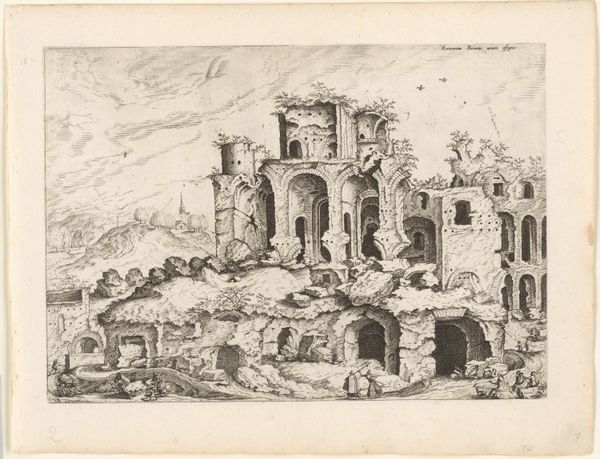
#
landscape illustration sketch
#
toned paper
#
light pencil work
#
ink drawing
# print
#
pen sketch
#
pencil sketch
#
pen-ink sketch
#
pen work
#
watercolour illustration
#
watercolor
Dimensions: sheet (trimmed to plate mark): 23.4 x 33.6 cm (9 3/16 x 13 1/4 in.)
Copyright: National Gallery of Art: CC0 1.0
Hieronymus Cock etched "The Baths of Diocletian," a scene brimming with ruins, during the 16th century. The image’s power resides in its stark depiction of decay; nature reclaims the once-grand architecture, marked by crumbling arches and vegetation. The arch, a symbol of triumph and dominion in Roman architecture, persists, yet fragmented. Echoes of this form reverberate through history, from triumphal arches celebrating emperors to the archways in Renaissance paintings that suggest higher realms of intellect. Consider how the arch reappears even in modern gateways, subtly reminding us of past empires. These ruins evoke melancholia, a poignant reflection on the ephemeral nature of power and human achievement. Just as Freud explored the subconscious mind, this image delves into the collective memory of lost grandeur. The crumbling stones speak of time's relentless march, subtly engaging our deepest fears and aspirations. This cyclical destruction and rebirth is not linear; it echoes through time, shaping our perception of the world.
Comments
No comments
Be the first to comment and join the conversation on the ultimate creative platform.
